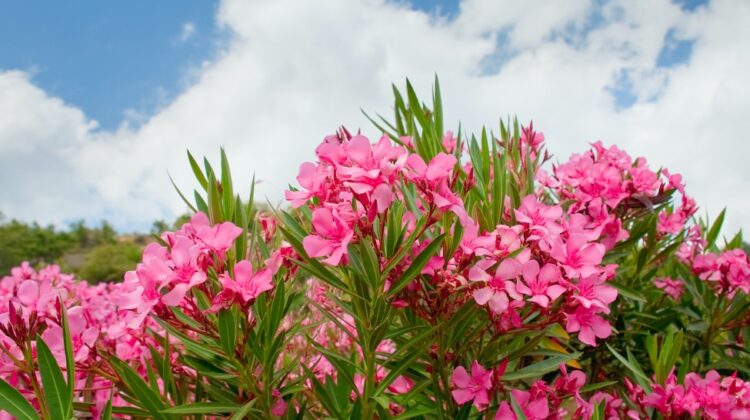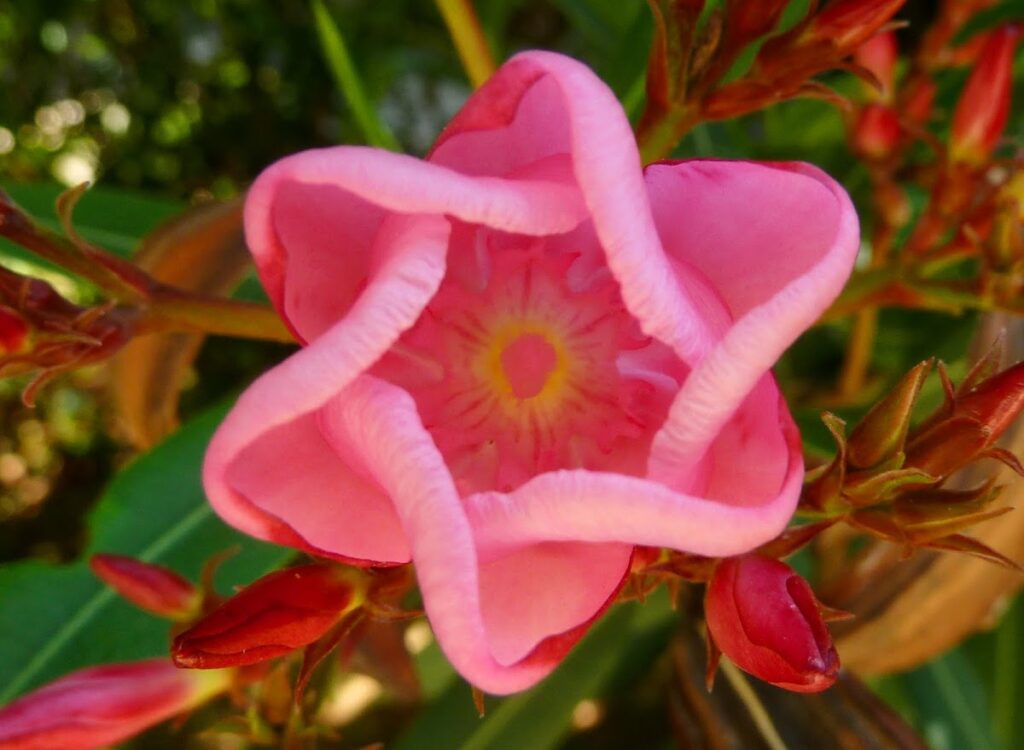
The Oleander, or Nerium oleander, is a beautiful and highly toxic evergreen shrub that has been cultivated as a decorative plant since ancient times. With its stunning tubular flowers, it is a popular addition to many gardens and can grow to be up to 6 meters tall. It is known for its narrow, lanceolate leaves that usually grow in groups of three.
One interesting fact about the Oleander is that a sticky latex is exuded when the stem is cut. The flowers are typically red or pink in the wild, but cultivars can be found in a range of colors, including white, cream, yellow, and purple. Double forms have also been selected, and some are even scented. It is fascinating to note that the opening of this flower forms a Star of David.

The fruit of the Oleander is composed of a pair of follicles that split along one side to release the oblong seeds, which have a plume of hairs at one end. Although this plant is a beautiful addition to any garden, it is important to note that it is highly toxic, and all parts of the plant are poisonous. In fact, Alexander the Great reportedly lost men as a result of eating meat skewered on highly poisonous Nerium twigs during his military campaigns.

The Oleander is native to the Mediterranean region, Iran, the Indian subcontinent, and southern China. It prefers warm climates and can be found growing in a variety of habitats, including rocky hillsides and dry streambeds.

Despite its toxicity, the Oleander has been an important plant in many cultures. In Istria, there is a local dish called manestra that is typically made with Oleander leaves. According to legend, if a husband was unfaithful, his wife would cook him manestra with Oleander leaves. While there are no reports of anyone actually being poisoned by Oleander in this manner, the legend remains intriguing.

If you are considering adding an Oleander to your garden, it is important to handle it with care and keep it out of the reach of children and pets. While it is a beautiful and fascinating plant, its toxicity should not be taken lightly. With proper care and attention, an Oleander can be a stunning addition to any garden, providing a touch of beauty and magic.

Leave a Reply